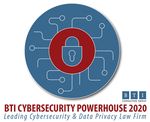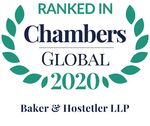A Risk-Based Approach to the SolarWinds Vulnerability Disclosures
←
→
Page content transcription
If your browser does not render page correctly, please read the page content below
A Risk-Based Approach to the SolarWinds
Vulnerability Disclosures
On December 13, 2020, SolarWinds disclosed that an unknown attacker compromised its network and inserted malicious code
(referred to as the Sunburst vulnerability) into software updates for the Orion platform. In what will likely become known as one of the
most widespread and damaging cyber attacks in history, approximately 18,000 private and government organizations installed the
malicious code as part of their usual patching process. But based on current information, the attacker – which was likely a Russian
intelligence service – used the vulnerability to infiltrate only a small fraction of the organizations that installed the malicious code.
Therefore, most will find no evidence of further compromise.
What happened?
We recommend the following
actions in response to this incident:
A For organizations that installed the malicious code, review SolarWinds disclosed on December 13, 2020, that an attacker
the guidance below, eliminate the malicious code from your – widely believed to be the Russian SVR, a successor agency to
network, and complete a preliminary review for evidence of the KGB responsible for spying outside Russia – compromised its
further compromise. Take additional action based on your network and inserted malicious code into the legitimate Orion code
organization’s risk profile and the preliminary review results. such that when organizations installed the compromised Orion
Document your actions and follow new developments released updates, they also unwittingly installed the attacker’s malicious
by SolarWinds, the U.S. Cybersecurity and Infrastructure code into their Orion servers. The security industry now refers to
Security Agency (CISA) and other government agencies this malicious code as the Sunburst vulnerability, which opens a
responding to the incident. backdoor (unauthorized connection point) to compromised Orion
A For all organizations, consider whether additional third-party servers. Upon install, which is the attack’s first phase, the malicious
diligence is necessary to evaluate your service providers’ code waits two weeks before attempting an outbound connection
potential exposure to the incident based on your risk profile and to the attacker’s command-and-control (C2) server. The two-week
the third-party service providers you work with. delay evades security reviewers that may be looking for these
unexpected connections. The initial connection merely notifies the
The SolarWinds Orion platform is a suite of products for
attacker that a new victim is available for further compromise in the
monitoring and managing information technology infrastructure.
attack’s second phase. In the second phase, the attacker sends
For most organizations that use Orion, it is a foundation of their
instructions for the compromised server to communicate with
infrastructure with tentacles into systems across the network.
additional C2 servers and pursue the attacker’s other objectives (all
Generally, servers running the platform are also connected to the
of which are still not clear).
Internet. This all makes Orion a perfect target for a supply-chain
attack: an attacker that compromises the SolarWinds tool can
use it to access a target’s network and move to other systems
with relatively little friction.
1Following the Sunburst disclosure, SolarWinds released information 2. Determine if you installed the versions of the Orion software
about a second Orion vulnerability referred to as Supernova. Unlike identified as compromised, and patch or update accordingly.
Sunburst, the Supernova vulnerability is not introduced through the These are identified on the SolarWinds website along with a
supply chain; instead, an attacker installs malware on an Orion server chart indicating the appropriate patching or updating path for
after it gains unauthorized access to the server through other means. particular versions of its software (https://www.solarwinds.
Supernova is designed to appear to be a part of the Orion software. com/securityadvisory). The site also provides a list of affected
SolarWinds products. Consider rebuilding compromised systems.
We learn more about the attack’s scope each day but based on
3. Preserve evidence to support your forensic investigation. Before
current information we believe the attacker moved to the attack’s
rebuilding or updating compromised Orion servers, obtain
second phase in only a relatively small number of organizations, for
forensic images of these servers (and the servers’ memory,
several reasons. First, the second phase is a manual process that
if possible) to support a forensic investigation. Also consider
consumes the attacker’s time and resources and requires careful
preserving other security information and logging that may soon
action to remain covert. Although well resourced, not even the SVR
be overwritten. Merely identifying and updating compromised
can manually exploit 18,000 organizations while maintaining the
Orion software versions may not be sufficient remediation –
operational security necessary to avoid detection. Second, many
most organizations that installed a malicious version should
organizations are unlikely to have information of interest to the
complete an initial review for signs of further compromise. As a
Russian intelligence services. High-risk targets are U.S. government
starting point, use published indicators of compromise (IOCs)
agencies, government and defense contractors, critical infrastructure
associated with the attack to identify potential evidence of further
organizations (including energy, financial, and healthcare), and private
compromise. See, e.g., https://www.fireeye.com/blog/threat-
companies that are technology and security service providers to
research/2020/12/evasive-attacker-leverages-solarwinds-supply-
other companies (allowing the attacker to further exploit the supply
chain-compromises-with-sunburst-backdoor.html. The need
chain). The attacker would waste its resources and unnecessarily
for additional forensic review will depend on the results of that
increase detection risk by exploiting other targets. Third, information
review and your organization’s risk profile. Discuss an appropriate,
released by public and private intelligence services indicates the
risk-based response and investigation plan with your information
attacker may have compromised approximately 250 organizations
security team and incident-response legal counsel.
in the attack’s second phase. This all suggests organizations should
4. Unfortunately, given the attacker’s sophistication, the attacker
take a risk-based approach to their response, guided by public
may have already altered or obfuscated publicly disclosed
information about the attack, each organization’s own risk profile as
IOCs or the attacker may have installed other malicious tools.
a potential target of the Russian intelligence services, and results of
Proactive threat hunting, monitoring, and additional logging
the organization’s preliminary review for evidence of compromise.
may be appropriate for certain organizations, depending on the
organization’s risk profile. Again, discuss an appropriate, risk-
based response and investigation plan with your information
security team and incident-response legal counsel.
5. Document your actions as part of your organization’s incident
response process and risk management processes.
My organization uses the Orion We’re concerned that our third-
software – what should we do now? party vendors may use Orion –
what should we do?
1. Get the background. In addition to the security advisory and
FAQs on SolarWind’s site, read CISA’s alerts and continuing
guidance on its Supply Chain Compromise page, including:
» CISA Activity Alert AA20-352A: Advanced Persistent Threat
Compromise of Government Agencies, Critical Infrastructure, 1. Prioritize review of third-party service providers that may use
and Private Sector OrganizationsAlert AA20-352A – https:// SolarWinds based on risk – if they have access to your systems
us-cert.cisa.gov/ncas/alerts/aa20-352a or data, consider how such access might be used to impact
» CISA Supplemental Guidance on Emergency Directive 21-01 your security or to expose sensitive data (e.g., customer or
employee information) – and find out whether they installed
» CISA updates Supplemental guidance on Emergency the compromised Orion software. If so, find out whether they
Directive 20-01 – note that as of December 30, 2020, (a) disabled the software or applied the hot fix, (b) investigated
the National Security Agency has now examined version whether the threat actor used the vulnerability to access the
2020.2.1HF2 and verified that it eliminates the previously compromised systems, and (c) can tell you whether your
identified malicious code systems or data were compromised as a result.
2. Document your actions as part of your organization’s vendor
management process.
2Looking Ahead Contacts
Theodore J. Kobus III Andreas T. Kaltsounis
Chair T +1.206.566.7080
Digital Assets and akaltsounis@bakerlaw.com
Data Management Group
Adam I. Cohen
T +1.212.271.1504
T +1.212.589.4629
tkobus@bakerlaw.com
aicohen@bakerlaw.com
Craig A. Hoffman
This event reminds us that supply-chain attacks are some of the T +1.513.929.3491
most difficult to prevent or detect. Organizations can minimize risk cahoffman@bakerlaw.com
of supply-chain attacks through fundamental information security
hygiene. Technical controls such as strong, zero-trust access control
and aggressive monitoring can help mitigate scope and detect
incidents when a supply-chain attack happens. And administrative Toll Free 24-Hour
controls such as third-party service provider diligence, security- Data Breach Hotline
conscious contracting requirements, and limiting third-party access +1.855.217.5204
to only that which is necessary can further limit damage.
10 BakerHostetler attorneys “Noted for its strength
were ranked in the 2020 in litigation and defending
edition of Chambers Global. regulatory investigations, and
4 firm rankings were earned sought after for its wide-
in the USA in the areas of ranging compliance advice.”
International Trade and Privacy – Chambers USA 2020
and Data Security in the 2020
edition of Chambers Global.
bakerlaw.com
Recognized as one of the top firms for client service, BakerHostetler is a leading law firm that helps clients around the world address their most complex and critical business and
regulatory issues. With six core practice groups – Business, Digital Assets and Data Management, Intellectual Property, Labor and Employment, Litigation, and Tax – the firm has
nearly 1,000 lawyers located coast to coast. For more information, visit bakerlaw.com.
Baker & Hostetler LLP publications inform our clients and friends of the firm about recent legal developments. This publication is for informational purposes only and does not constitute an opinion of Baker & Hostetler LLP. Do not rely on this publication without seeking legal counsel.
© 2021 Risk-Based Approach to the SolarWinds_BH
05.01.21.14.41
only_p03
3You can also read



























































